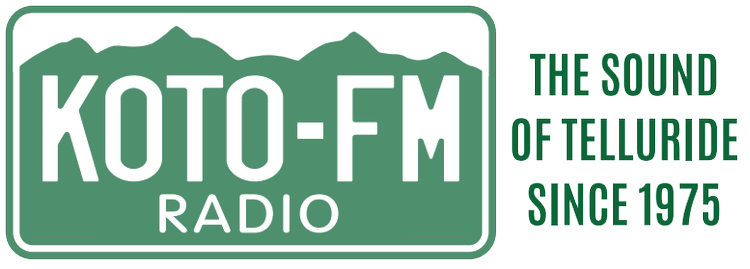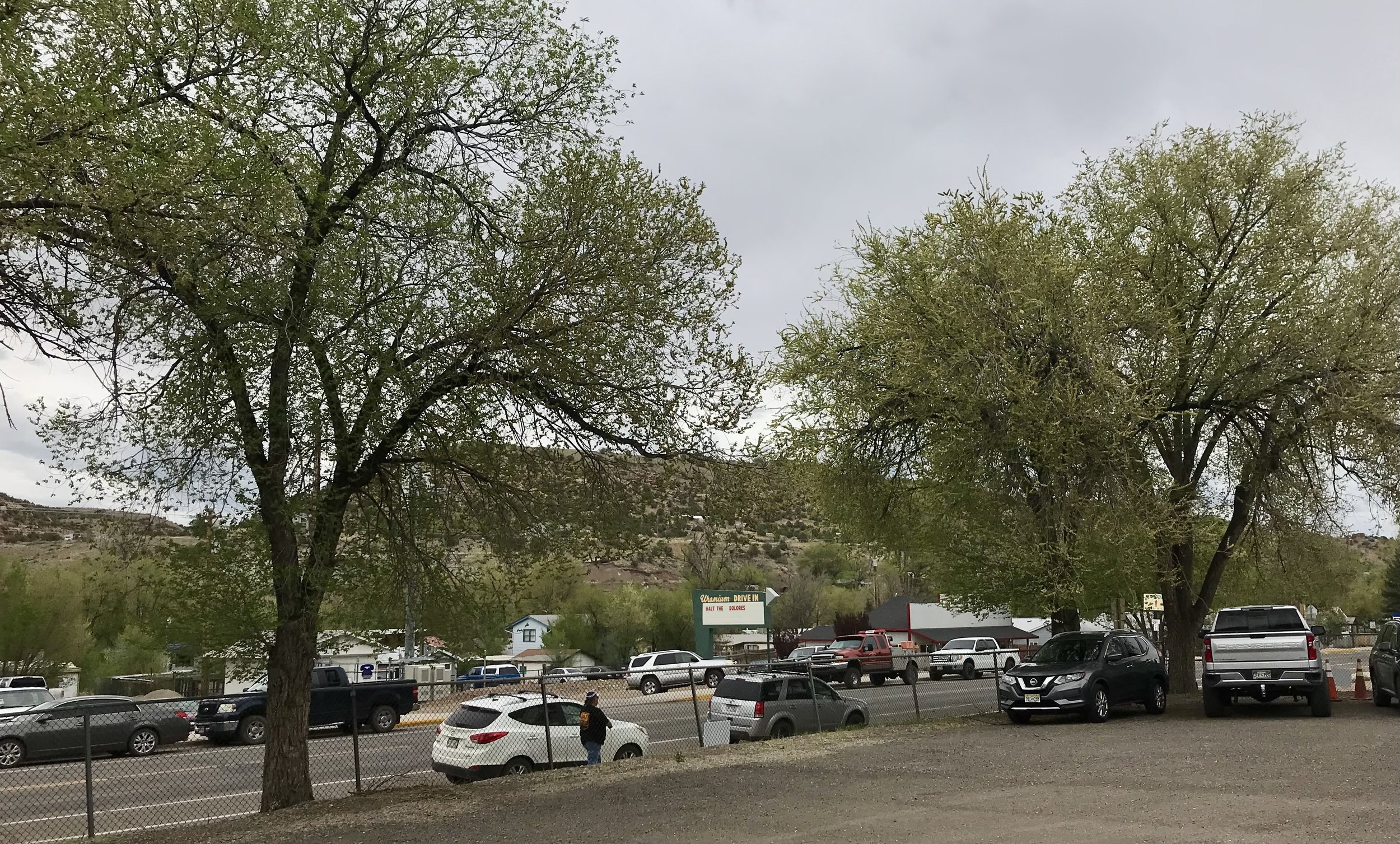By Eliza Dunn
It’s a little bit before 9am. The morning is still cool, and Telluride is just waking up. But the birds have been awake for hours. I’m at the Post Office near Town Park. It’s quiet —there are a couple people out walking their dogs along the River Trail. And if you listen closely, you can already hear some birds.
A small crowd is gathering on the sidewalk. Most people have binoculars hanging around their necks. At the center of it all is Katie Triest, professional bird nerd (according to her business card) and local field guide. “I own my own birding company,” she explains. “It’s called the Birding Company, the Birding Co., and I take people on guided bird trips.”
Triest says her passion for birding began with a clock. “My college roommate took an ornithology class and as a joke, I got her a clock of all the bird calls,” she says. “And the redwing blackbird really stuck out to me, and so I learned the redwing blackbird and it became an eye spy game for me. And so I just literally started becoming obsessed with what’s around me, to identify it.”
Today, Triest is running a trip with the Wilkinson Public Library. It’s a group of about ten or twelve—not ideal for birding, but we squeeze onto the River Trail, careful not to disturb what’s living in the green brush. Triest points out a bird hovering above: “Ooh—so there’s a broad-tailed hummingbird! On that willow. They’re very fast, but they will perch, which is fun, because a lot of the time you don’t see that.”
Triest scans the sky. When she points out a bird, everyone’s binoculars fly up to their eyes. “So that thing you’re hearing is a white crowned sparrow,” she says. “And we’ll see those too. It’s got a really cool white and black cap.”
As we walk, Triest explains what she’s looking—and listening—for: “I’m listening to anything I hear, just bird sounds all around me. And I’m looking for movement. Because that’s how I’ll find something, you know. Like if I’m just staring at a little area, I’m just waiting for a bird to move so I can track it. And once you hear it, you can’t unhear it. That’s all I hear. I’m so distracted in conversations when people try to talk to me, I’m just like oh—oh so there’s some Canada geese…”
Once you know where to look, there are birds everywhere. Standing on the riverbank, some first time birdwatchers list what they’ve seen today. “We saw a yellow warbler,” one woman says, “and a hummingbird.” “A couple of them!” another woman adds. “Yeah, broad-tailed hummingbirds. And then there was something else that she said was nesting…” Her friend jumps back in, “I forgot… That wasn’t a sparrow….” The other woman shakes her head, “No, but we did see a sparrow and we saw a robin.”
There are also American dippers and Brewer’s blackbirds and hummingbirds and song sparrows, all right along the River Trail. Walking a familiar route, like this one, is one of Triest’s favorite parts of birding, because “it gives people the opportunity to learn the birds that they’re going to be walking with day in and day out. It’s a great way to get to know your neighborhood.”
“What I love about birding,” she continues, “is that it’s so good meditatively, because you can’t concentrate on anything else. So, it helps your brain slow down and stop if you’re anxious or worried about something. When you’re concentrating on finding stuff and looking so intently, that all goes away.”
Focusing on your surroundings, Triest says, brings you right into the present moment along with the geese and the sparrows. It requires patience, and careful attention to the world around you.
Another birdwatcher on the walk agrees—even in the most familiar places, paying close attention allows you to notice things you’ve never seen before. Pointing out a broad-tailed hummingbird, he says that “it all depends on the angle of the sun to the bird. Because they can look very plain, very plain, and then they can look that gorgeous.”
Triest’s advice to aspiring birders is simple: “just get out there, get outside. Get a field guide. But really when you’re in the field the best thing you can do is really focus on the subject without trying to find what it is. Write it down. Notice—is there an eye ring, are there wing bars, where is the color on the bird, what kind of sound is it making, what habitat is it in?”
Oh, and Triest’s favorite bird? “My favorite bird is the pigeon,” she admits, “and I’ll get a lot of flack for that.” I ask her why, and she explains, “they’re really incredible parents. They’re resilient, which I love. I love a good resilient bird. They’re adaptable. And I think they look pretty badass, you know? And they’ve got so many color morphs, which is evolutionarily speaking very cool. They’re just rad animals.”
Triest says not to worry—there are no pigeons in Telluride, so she can’t take you on a pigeon-watching trip. But there are warblers and mallards and redwing blackbirds and all kinds of birds sharing our backyard here in the Box Canyon. So next time you step outside, take a look—or just listen.































